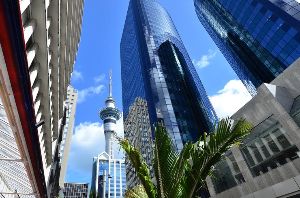How office space will transform
The mass adoption of remote working across the globe has led to vociferous debate on the future role of commercial office space within cities, with the spotlight on CBDs.
Wednesday, June 16th 2021, 6:44AM

It is particularly topical in the world’s gateway cities, many of which have struggled to remain relevant during the depths of the pandemic.
However, as cities move into the next cycle of recovery, offices are expected to re-emerge as the beating heart of reenergised CBDs.
Even so, there is little doubt the role of the CBD office will change, as will corporate requirements for office space.
Companies will need to rethink their office space to reflect the changing functions of cities and to accommodate the new aspirations of people in terms of the way they want to work and live.
Office space will have to become more agile and elastic, with adaptive reuse that enables hybrid uses.
Tomorrow’s CBD offices will become social and business hubs, such as co-working spaces, destinations for small companies and corporates for face-to-face interaction, collaboration, innovation, creativity and socialisation.
Data from surveys conducted by real estate giant JLL’s Global Benchmarking Services highlights the attraction of the office for internal and external collaboration, interaction with colleagues and complex brainstorming.
The provision of services and amenities within the workplace around health and wellbeing will also increase. And the future hybrid office workplace will heavily rely on technology, requiring seamless connectivity between office and home.
With the focus on cost efficiency, some New Zealand companies are already starting to rationalise their office space over the short-to-medium term – but there is also a flight to quality assets and locations.
Changing workstyles will require a radical rethink by corporations and city governments alike.
Planning policy and zoning regimes will have to respond to new workplaces and work preferences that will reshape the volume, style and geography of offices.
Never has the demand for transparency and high-quality data been greater as city governments and businesses seek to objectively report and track the impact of change.
Vast amounts of data are now being collected by both city governments and the private sector on all aspects of city life.
Volumes of real-time data on space usage, mobility, health, worker sentiment and energy efficiency have the potential to be harvested as buildings gradually become smarter and better connected.
Office de-densification
Take office floorspace densities for example. Covid-19 has put into question the appeal of high occupational densities.
Employees’ now expect new standards in terms of work environments – with physical and mental wellbeing at the centre of office design and a greater emphasis on collaboration.
In JLL’s latest Worker Preferences Barometer, 37% of employees expect a less dense work environment in the future.
However, de-densification patterns will vary significantly from city to city, and industry to industry.
Understanding these differences will be key to creating more efficient and productive office space in the right locations in cities.
Global data shows the average office allows 13m² of space per person.
Pressures to reduce density are likely to be strongest in those cities that had particularly tight pre-Covid densities of under 10m² per person, where ratios of less than one desk per employee had been commonplace.
The strongest pressures to de-densify are expected to be found in high order business hubs as office design evolves to support productivity, wellbeing and experience alike.
Companies will need to allocate more square meterage to collaboration and amenities in order to attract and retain high-quality talent.
Every crisis leads to a shift in space occupation patterns.
Space utilisation and occupational density metrics will be increasingly important to track as businesses adjust to new circumstances and seek to balance a complex range of factors.
These factors will determine the future requirement for office space; from the appetite and propensity for remote working and increased emphasis on wellbeing and experience, to changing office designs and the adoption of technology.
City governments will also draw on these metrics to better understand the way buildings are used, as well as their resource efficiency, to help frame urban and environmental policy.
Occupational densities will be part of a widening suite of dynamic “metrics that matter” – including those measuring human experience – that businesses and the cities in which they are housed will increasingly need to access.
Utilities matter
Crucially, occupational space densities have a significant impact on consumption of energy, water and waste.
For example, energy consumption per person in Asia Pacific is much lower due to tighter occupational densities.
Future sustainability scenarios will have to take into consideration occupational space densities.
As more cities around the world enter the post-pandemic era, many corporate occupiers are looking to seize the opportunity to reset their sustainability goals with more ambitious targets.
Again, data will be at the forefront, helping to identify where they need to improve, to demonstrate how they are changing in line with their new targets and to meet new regulations as governments take more aggressive action to decarbonise their economies.
With 39% of carbon emissions coming from the built environment – according to the World Green Building Council – there will be mounting pressures to deliver low-carbon, highly resource-efficient buildings, in terms of energy, water and waste.
The next few years will be pivotal in city and corporate efforts to achieve their net zero and sustainability ambitions.
This is an unprecedented opportunity for the real estate industry to “build back better”, using data and technology to create a more productive, healthy and sustainable built environment.
| « Roaring industrial market heats up | PMG to buy two substantial properties » |
Special Offers
Comments from our readers
No comments yet
Sign In to add your comment
| Printable version | Email to a friend |


